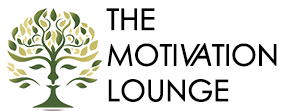Summary
Motivation provides the essential energy to propel performance and achievement. Without drive and direction, individuals struggle to realize their full potential personally and professionally. In this piece, we will objectively examine prevailing motivational theories that offer models for understanding core human needs, cognitions, emotions, and goals that spur action.
The article will analyze seminal concepts, including Maslow’s hierarchy of needs, expectancy theory, self-determination theory, and goal-setting theory. Each framework provides research-based insights into the factors that shape motivation based on physiological requirements, thought processes, social connections, and achievement. Additionally, we will discuss practical applications of these theories for boosting motivation in real-world contexts like the workplace.
Although different models may resonate with unique personalities and needs, motivation is complex and multi-faceted. Discerning the strategies that align with one’s distinct drivers and ambitions is crucial for channeling motivation effectively. By reviewing these foundational motivational frameworks and customizing our approach, we can unlock our greatest potential professionally, build meaningful relationships, and lead deeply fulfilling lives. The path forward is illuminated when we understand what truly motivates us.
Motivation can help us to achieve our goals, make positive changes, and continuously improve ourselves. Leading motivation theories can provide crucial insights into what we know personally and professionally. Understanding what motivates us deeply can be the key to unlocking our most significant well-being potential.
But with the myriad of motivation theories, how do we know which is the most effective? Exploring some leading motivation theories can provide crucial insights into what drives human behavior and performance. Identifying the right motivation strategies for your unique needs and circumstances may be the best path to success.
The Importance of Motivation
It is essential to understand why motivation matters so much. Motivation provides the fuel for accomplishing tasks and objectives. It gives us the energy and direction to pursue excellence and live purposefully. Research has also shown that motivation leads to greater productivity, increases engagement, boosts creativity, enhances well-being, and so much more.
On the other hand, a lack of motivation can cause individuals to feel apathetic, disconnected, and unable to reach their potential. It can also negatively impact organizations through reduced output, poor performance, and high turnover. Motivation is indispensable if you want to excel at work, build meaningful relationships, or lead a healthy and fulfilling life.
Pinpointing the best motivational strategies tailored to your personality and ambitions can help you thrive. Let’s explore some leading theories that provide powerful insights into the psychology of motivation.
Maslow’s Hierarchy of Needs
One of the most renowned motivation theories is Abraham Maslow’s hierarchy of needs. Introduced in 1943, this theory states that humans are motivated to fulfill basic needs before moving on to more advanced needs. According to Maslow, the most fundamental needs are physiological – food, water, shelter, clothing.
The next level involves needs related to safety and security. Once these basic survival needs are met, Maslow asserts that humans are then driven by need for love and belonging. Following that, the need for self-esteem and confidence emerges. The pinnacle of Maslow’s hierarchy is self-actualization – realizing one’s full potential.
This theory illustrates how people focus energy on the most pressing needs first. For example, someone facing homelessness will unlikely to pursue self-improvement goals until securing housing and food. Beyond understanding human motivation, Maslow’s hierarchy has been widely applied in fields like business management to help employees reach higher levels of motivation.
Expectancy Theory
In contrast to Maslow’s model, expectancy theory takes a more cognitive approach to motivation. This theory, developed by Victor Vroom in 1964, Expectancy theory has three key componentsfocuses on the internal thought process regarding different behaviors. The key premise is that individuals are motivated by how much they expect a certain outcome to occur as a result of their actions.
There are three key components of expectancy theory: expectancy, instrumentality, and valence. Expectancy refers to the odds that effort will result in the desired performance. Instrumentality describes the belief that achieving the performance standard will result in the expected reward or outcome. Finally, valence refers to the value the individual places on the reward.
According to this theory, motivation depends on how much we expect our efforts to produce the outcomes we desire or value. For instance, an employee is more likely to be motivated if they believe working harder will definitely lead to a promotion that offers higher pay. Expectancy theory emphasizes the importance of aligning rewards with desired behaviors.
Self-Determination Theory
Moving beyond biological and cognitive motivational factors, self-determination theory focuses on the social and emotional aspects. Developed by psychologists Edward Deci and Richard Ryan, this theory examines how intrinsic motivation thrives in contexts that satisfy basic psychological needs for autonomy, competence, and relatedness.
Unlike Maslow’s model, self-determination theory does not rank needs hierarchically. Its premise is that humans require regular experiences related to feeling in control, skilled, and connected to others. When these experiences are present, people are more motivated, engaged, and persistent. They focus less on extrinsic rewards and more on the meaning and enjoyment of activities.
For example, employees feel more motivated when given freedom over how they complete tasks, opportunities to develop mastery, and a sense of belonging with coworkers. Applications of self-determination theory aim to foster motivational environments that nurture these core needs.
Goal-Setting Theory
The final motivation theory we will explore is goal-setting theory which emphasizes the importance of clear, specific and challenging objectives. Presented by psychologist Edwin Locke in 1968, this theory states that setting goals drives action and boosts motivation by directing attention, pushing people to work harder, and leading to persistence.
There are a few core tenets of effective goal-setting according to this theory. Goals should be specific rather than vague; measurable rather than ambiguous; challenging yet realistic; and bound by time constraints. These principles motivate greater effort than easy or overly general goals. An example is setting a goal to lose 2 pounds this month rather than just stating you want to lose weight.
Overall, goal-setting theory underscores the motivational power of establishing tangible objectives and monitoring performance. This provides direction and validates efforts through progress assessment. Organizations frequently incorporate goal-setting because it delivers results.
Comparing the Theories
While each of these theories provides valuable insights into motivation, they have differing strengths and weaknesses. Maslow’s hierarchy offers a broad framework for understanding motivation but is limited by its rigid structure. Expectancy theory helps connect effort to outcomes but is highly cognitive in nature. Self-determination theory balances social, emotional, and psychological needs but is not easily measurable. And goal-setting theory is highly practical yet does not account for individual differences.
The reality is motivation is complex and no single theory may apply universally. For instance, self-determination theory may resonate more with intrinsically motivated individuals, while goal-setting works well for those driven by competition and achievement. The best approach may be determining which theories align with your personality and needs. A combination of strategies targeting cognitive, emotional, social, and biological motivation drivers may be most effective.
Finding the Right Motivation Strategy
Motivation is crucial to excelling in our personal and professional lives. Thankfully, a wealth of research and theories exist offering insights into the psychology of motivation. While needs and perspectives on motivation differ, exploring various theories can help pinpoint the best strategies to reach your goals.
Maslow’s hierarchy ensures basic needs are fulfilled before higher ones can be achieved. Expectancy theory connects effort to outcomes through impactful incentives. Self-determination theory satisfies needs for autonomy, competence, and relatedness. And goal-setting theory establishes clarity of purpose and direction through specific, measurable objectives.
Rather than viewing these theories in isolation, think about how your unique personality aligns with different approaches. What motivates you most – financial rewards, achievement of milestones, or enjoyment of the work itself? How can you combine strategies targeting different motivation drivers? With knowledge, self-awareness, and experimentation, you can discover the motivation theory and applications that work best for you.
Applying Motivation Theories in the Workplace
Now that we have explored the core concepts of popular motivation theories, how can we apply these frameworks in a practical setting like the workplace? Understanding what motivates employees and teams is crucial for managers aiming to increase productivity, engagement, and excellence. Let’s examine how these theories can be utilized.
Maslow’s hierarchy reminds leaders that foundational needs like compensation, job security and safe working conditions must be fulfilled before prioritizing higher-order needsmore tremendous. According to the framework, initiatives targeting esteem or self-actualization will flounder if basic requirements are not adequately met. Managers can assess where different employees stand on the pyramid and customize approaches accordingly.
Expectancy theory highlights the importance of connecting effort and performance to valued rewards. Managers should tie incentives directly to goals, communicating this linkage clearly to employees. Rewards can involve compensation, recognition, promotions, development opportunities and more. Tying rewards to specific high-priority outcomes will motivate greater effort.
To apply self-determination theory, managers should assess if the work context meets needs for autonomy, mastery and relatedness. Providing flexibility and input in how work is done, opportunities to develop expertise, and a collaborative team environment will fuel engagement and drive according to this theory. Managers play a key role in fostering the right social context.
Goal-setting theory spotlights the motivational power of establishing objectives that are specific, measurable, achievable, relevant and time-bound (SMART). Managers should collaborate with employees to set tailored short and long term SMART goals that align with organizational objectives. Progress can be regularly reviewed.
While each theory provides valuable insights, the best approach is to blend strategies that appeal to different motivational needs and preferences. A combination of fulfilling basic needs, providing personalized growth opportunities, fostering social connections, and setting SMART goals tailored to the individual will yield optimal motivation and performance in the modern workplace.
Conclusion: Motivation Drives Us Forward
In the end, motivation is a multifaceted and complex subject, but also one of the most important when it comes to elevating happiness and success in our lives. By taking the time to understand our needs and drivers at a deeper level truly, we can apply highly effective strategies to become our best selves professionally, achieve our ambitious goals, build meaningful connections, and lead deeply fulfilling lives.
Although there are differences between people, powerful commonalities inspire us universally. We all seek autonomy, competence, security, belonging and purpose. Leveraging these core motivational drivers while customizing approaches that speak to our unique personalities and needs is the recipe for sustainable motivation.
While self-discovery and actualization are long, exploring motivation theories gives us an invaluable roadmap. Our motivation drives us propels us forward through challenge and change. We can accomplish the extraordinary for ourselves and the broader world with motivation powered by aligned theories and strategies. The future is bright when our motivation shines through.
Frequently Asked Questions About Motivation Theories
What is motivation, and why is it important?
Motivation is the inner drive that directs our actions and behaviors. It fuels us with the energy to accomplish tasks, objectives, and goals. Motivation is critical for productivity, engagement, creativity, well-being, and achieving our full potential. Insufficient motivation can lead to poor performance, apathy, and dissatisfaction.
What are some well-known motivation theories?
Influential motivation theories include Maslow’s hierarchy of needs, expectancy, self-determination, and goal-setting theories. Each provides frameworks for understanding human motivation based on fulfilling needs, connecting effort to outcomes, satisfying inner drivers, or setting objectives.
How does Maslow’s hierarchy explain motivation?
Maslow’s hierarchy states humans are motivated to fulfill basic needs before higher-level ones. The levels of the hierarchy are:
1) Physiological
2) Safety
3) Love/Belonging
4) Esteem
5) Self-actualization.
This theory says we focus energy on the most pressing needs.
What is the key idea behind expectancy theory?
Expectancy theory says motivation depends on how much we expect our efforts to produce desired outcomes. The key components are expectancy, instrumentality, and valence. This cognitive theory connects effort, performance, and rewards.
What are the core needs in self-determination theory?
Self-determination theory focuses on autonomy, competence, and relatedness. It states intrinsic motivation thrives when these psychological needs are satisfied. Environments meeting these needs increase engagement, enjoyment, and persistence.
Why can goal-setting theory be motivating?
Goal-setting theory argues that specific, measurable, achievable, relevant, and time-bound (SMART) goals drive motivation by providing direction, pushing people to work harder, and leading to persistence. Clear goals motivate more significant effort.
How can I determine the best motivation strategies?
Assess which theories relate to your personality and needs. For example, self-determination theory may suit those driven intrinsically, while goal-setting aligns with competitive personalities. Often, a blend of strategies tailored to your needs and motivational style works best.





